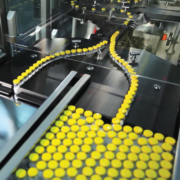The Top Three Pandemic Manufacturing Inspection Techniques That Are Here to Stay
With many pharmaceutical manufacturing facilities unaccustomed to in-person GMP inspections since the pandemic, Arif Noorani, Josefine Sommer, and Daniel Roberts examine how inspection techniques have evolved.
- Remote assessments: The pandemic led to a need to limit in-person contact due to global travel restrictions and public health guidelines. Many drug regulators resorted to increasingly requesting and assessing documents remotely in advance of—or even in lieu of—in-person inspections of regulated facilities. Now that travel restrictions have largely been lifted, in-person inspections have resumed. However, the FDA has continued to request and assess a significant amount of documents in advance of their inspections. Going forward, it is likely that key parts of an inspection (including the facility’s first impressions) will be performed before arrival at the facility through remote document review and assessments. This trend may also mean that new types of documents—documents that were traditionally reviewed on-site by inspectors—will now be reviewed remotely. These documents could include manufacturing and data integrity-related investigations and reports, which are now particularly vulnerable to such disclosure requests. Regulators may choose to use these documents as part of their preparation before they arrive for an on-site inspection, or they may base their decisions solely on these documents without a site visit. Facilities will therefore need to be in a “state of readiness” to provide multiple documents in comprehensive formats—such as core quality system documents, investigations and deviations—in addition to the usual preparations for an in-person inspection. A positive consequence of this development is that advance document requests provide some clarity to the facility about the potential purpose and objectives of the inspection, as well as any areas the regulator may be particularly focused on. The FDA released draft industry guidance on remote inspections in July.
- Mutual recognition of inspections by international regulatory bodies: Mutual recognition is a mechanism that allows the FDA and other regulators to rely on information and observations collected by a competent authority within a country’s borders. Mutual recognition has been in place in some form since 2014 in the U.S. and for longer in the EU, but was not often used prior to 2020. During the COVID-19 pandemic’s restrictions on travel, the FDA and other regulators increasingly began utilizing mutual recognition because it provided greater efficiency. This also helped agencies synchronize inspection schedules and allocate sufficient resources towards higher risk inspections. Because of these strategic benefits, the FDA and many other regulators worldwide are likely to continue to take into account inspections conducted by international regulators, and companies should prepare for all inspections with the same level of readiness.
- Inspections without advance notice in some countries, particularly India: Prior to the COVID-19 pandemic, domestic inspections performed by the FDA were largely unannounced, while facilities based abroad were provided with advance notice. Notwithstanding the pandemic, and due to the permanent presence of investigators at the FDA’s international offices such as those in India and China, pharmaceutical companies in these regions have seen instances where little or no advance notice has been given for inspections by investigators traveling from the FDA’s headquarters and from its international offices. We believe the unannounced inspections will increase in many other regions, regardless of the FDA’s international presence.
In light of these new inspection techniques, pharmaceutical manufacturing facilities should update and revise their standard operating procedures on inspection management. We recommend setting up regular mock audit sessions and document reviews, identifying the best spokespeople and subject matter experts for interactions with an investigator (including in potential virtual meetings), and preparing for the disclosure of challenging manufacturing or compliance-related areas revealed and corrected over the past few years.
This post is as of the posting date stated above. Sidley Austin LLP assumes no duty to update this post or post about any subsequent developments having a bearing on this post.

